Complications and technical failures
1. Frequent complications
The most frequent complications are related to soft-tissue problems including tendon adhesions, intraarticular fibrosis, and scarring around implants and the surgical site. Attention to careful soft-tissue management and early rehabilitation including mobilization and appropriate splintage are all relevant to prevention of these problems.
- Infection (general complication)
- Nonunion
- Malunion
- Malalignment
- Posttraumatic arthritis
- Bone necrosis
The most common complications are associated with scaphoid fractures as they are the most frequent fractures in the carpus.
Nonunion, malunion, and malalignment may all cause functional disability. If symptomatic, revision surgery is often indicated.
Malalignment with articular malunion is commonly associated with degenerative arthritis. If symptomatic, reconstruction surgery may be indicated.
Scaphoid nonunion advanced collapse (SNAC) and scapholunate advanced collapse (SLAC) cause altered carpal biomechanics and are frequently a cause of degenerative arthritis.
For details on posttraumatic arthritis refer to:
- Andersson JK, Hagert E, Brittberg M. Cartilage Injuries and Posttraumatic Osteoarthritis in the Wrist: A Review. Cartilage. 2021 Dec;13(1_suppl):156S–168S.
2. Nonunion
Signs for nonunion are pain, nonbridging healing on x-ray or CT in a period of 6–9 months after treatment.
For example, nonunion or malunion with flexion (the humpback deformity seen in this coronal CT image) of the scaphoid causes shortening of the radial column of the carpus. This results in painful restriction of carpal movement and diminished power grip.
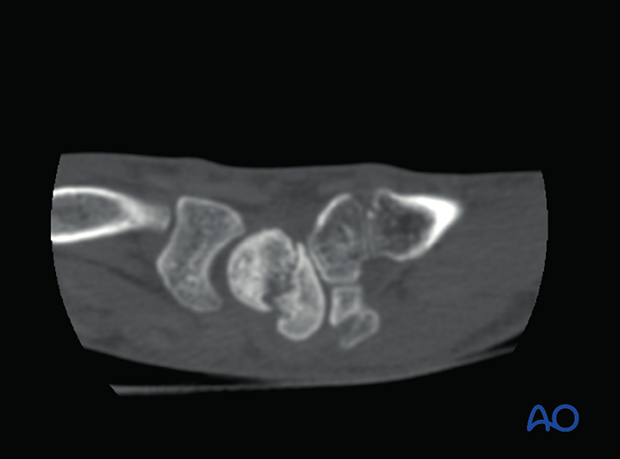
Prevention
- Gentle operation technique to avoid damage to soft tissue and vascular supply
- Intraoperative assessment of construct stability
- Postoperative radiological assessment of reduction and fixation
- Anatomical reduction and fixation (stable fixation of the scaphoid axis)
Concomitant injuries should be addressed at the same time as the fracture to improve stability.
Appropriate postoperative management will help to protect the fracture from secondary displacement.
Management of nonunion
Treatment of nonunions includes:
- Nonunion resection (image)
- Bone graft interposition (both vascularized and nonvascularized bone grafts can be used equally effectively)
- Stable internal fixation
- Dynamic splintage
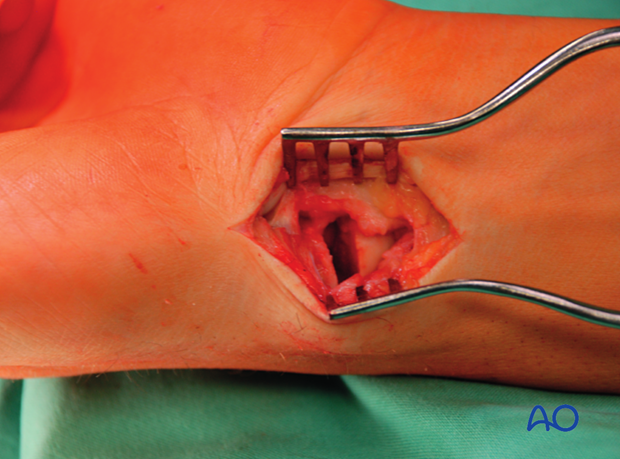
Corticospongious bone graft
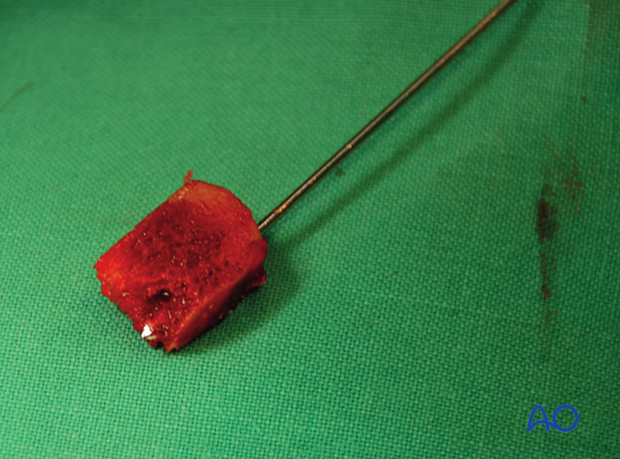
3. Malunion
Prevention
- Anatomical reduction
- Stable fixation
- Intraoperative assessment of construct stability
- Postoperative radiological assessment of reduction and fixation
Management of malunion
- Corrective osteotomy
- Bone graft interposition (both vascularized and nonvascularized bone grafts can be used equally effectively)
- Stable internal fixation
- Dynamic splintage
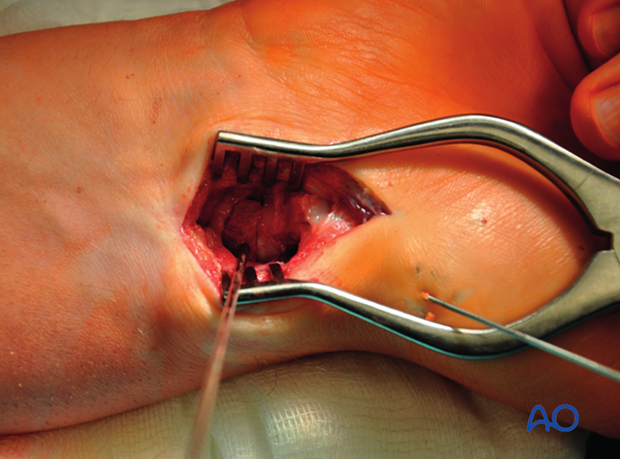
CT of a scaphoid malunion managed with bone graft and headless compression screw
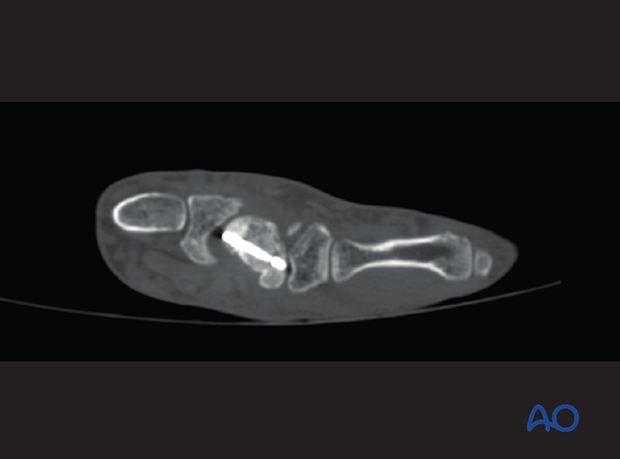
4. Malalignment
Prevention
- Anatomical reduction
- Stable fixation
- Intraoperative assessment of construct stability
- Postoperative radiological assessment of reduction and fixation
Management of malalignment
- Corrective realignment
- Soft-tissue revision and reconstruction
- Stable internal fixation













